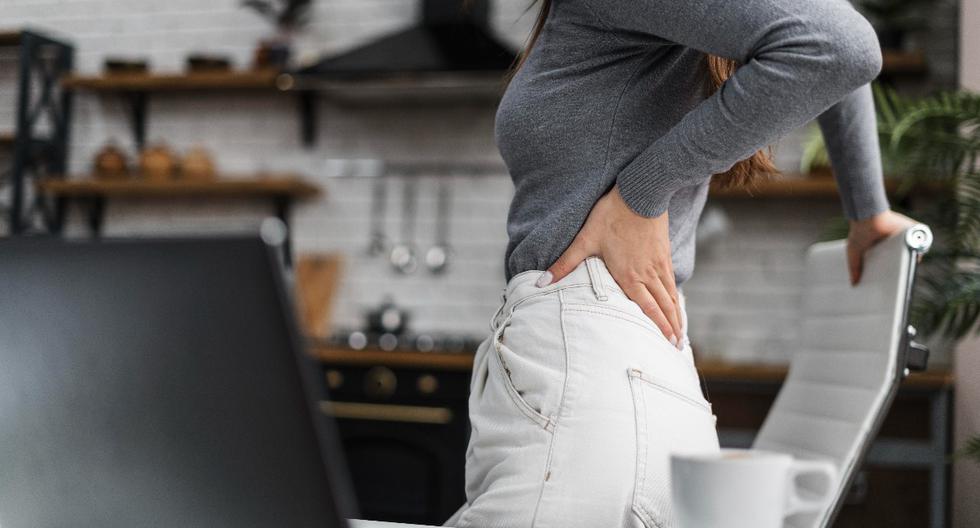Deploy Folding Table of contents
Lumbar hernias are painful and debilitating. They can lead to constant back pain and discomfort, which can interfere with everyday activities. Fortunately, there are ways to alleviate the pain and discomfort associated with lumbar hernias. With the right strategies, it is possible to live pain-free and enjoy a full, active life.
Proven Strategies for Easing Lumbar Hernia Pain
The first step in finding relief from lumbar hernia pain is to understand the condition. Lumbar hernias occur when the lumbar vertebrae become weakened due to age, childbirth, or injury. This can cause a bulging of the vertebrae, which can cause pain and discomfort. The best way to reduce this pain is to strengthen the muscles in the lower back.
One of the most effective ways to do this is through regular exercise. Regular stretching, such as yoga and Pilates, can help to strengthen and stretch the lower back, relieving pain and discomfort. Additionally, strengthening exercises such as planks and lunges can help to build strength and flexibility in the lower back.
It is important to find an exercise routine that works for you. If you are unsure of how to get started, speak to your doctor or a physical therapist for advice. They can suggest exercises and stretches that will help to ease your lumbar hernia pain.
Discovering Natural Solutions for Back Discomfort
In addition to exercise, there are other natural remedies that can be used to reduce lumbar hernia pain. Massage therapy is one of the most effective ways to reduce back pain and stiffness. Massage relaxes the muscles, increases circulation, and helps to reduce inflammation. It is important to find a therapist who is experienced in treating back pain.
Heat therapy is also an effective way to reduce discomfort associated with lumbar hernias. Applying a hot compress can help to reduce inflammation and relax the muscles. Additionally, applying an ice pack can help to reduce inflammation and reduce swelling.
Exploring Treatments to Help Manage Pain
In some cases, medications may be necessary to reduce pain and discomfort associated with lumbar hernias. Non-steroidal anti-inflammatory drugs such as ibuprofen can help to reduce inflammation and reduce pain. Additionally, muscle relaxers and pain medications can help to reduce pain and discomfort.
It is important to speak to your doctor about the best treatments for your condition. Depending on the severity of the pain, your doctor may suggest surgery. Surgery can sometimes be necessary to repair the hernia and reduce pain.
Uncovering Tips for Reducing Lumbar Hernia Symptoms
In addition to exercise and medications, there are also lifestyle changes that can help to reduce pain and discomfort associated with lumbar hernias. Maintaining a healthy weight can help to reduce the strain on the lower back. Additionally, getting enough rest and avoiding strenuous activities can help to reduce inflammation.
It is also important to wear supportive footwear and use correct posture when standing and sitting. This can help to reduce strain on the lower back and reduce pain. Additionally, avoiding heavy lifting can help to reduce strain on the lower back.
Breaking Free from the Cycle of Pain and Discomfort
Living with lumbar hernia pain can be challenging, but it is possible to find relief. With the right strategies, it is possible to reduce pain and discomfort and regain an active lifestyle. Exercise, natural remedies, and medications can all help to reduce pain and discomfort. Additionally, making lifestyle changes can help to reduce strain on the lower back and reduce pain.
By working with your doctor and exploring the treatment options available, it is possible to break free from the cycle of pain and discomfort associated with lumbar hernias. With the right treatment plan, you can reduce pain, improve mobility, and enjoy a pain-free life.
Conclusion
Living with lumbar hernia pain does not have to be a life sentence. With the right strategies, it is possible to reduce pain and discomfort and regain an active life. From exercise and natural remedies to medications and lifestyle changes, there are a variety of treatment options available to help reduce pain and discomfort. With the help of your doctor, you can find a treatment plan that works for you and break free from the cycle of pain and discomfort.
Sources
- Metha, V. (2017). Lower Back Pain: Causes, Relief and Treatment. The American Journal of Medicine & Science.
- Dunn, K. and Androwski, R. (2016). Treating Lower Back Pain. The American Family Physician.
- Greene, J. (2019). Lumbar Hernia: Causes, Symptoms, Treatment, and Prevention. Harvard Health Publishing.



